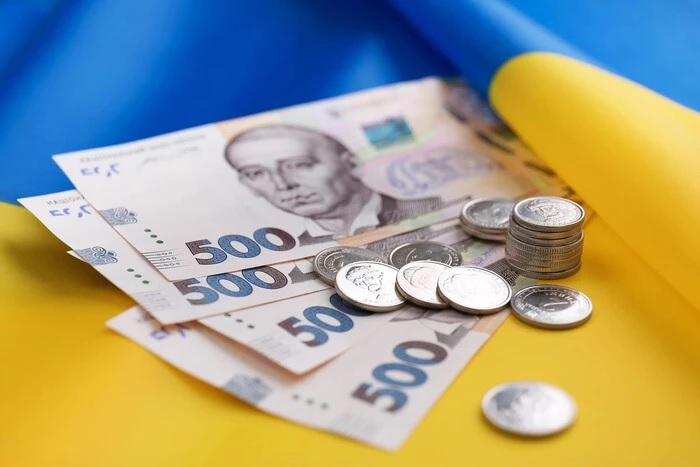There is not enough money for everyone: salaries and social security have been frozen in Ukraine
6 March 18:46
There will be no increase in the minimum wage in Ukraine this year. This is one of the requirements of the International Monetary Fund (IMF) and the World Bank. The reason for this is to reduce state budget expenditures on public sector salaries, as the bulk of money is spent on defense. In other words, the minimum wage will remain the same as before – UAH 8,000.
MP Bohdan Kitsak said on TV that MPs “will not take any steps to increase the minimum wage, which will affect our forecasts for budget revenues.”
After all, a potential increase in the minimum wage would increase state budget expenditures on salaries of civil servants – teachers, doctors and other public sector employees.
“It is currently impossible to raise the minimum wage by law due to the resistance of international partners, including the International Monetary Fund,” explained Kitsak.
This is despite the fact that in late February, the Verkhovna Rada registered a bill proposing to revise minimum pensions, salaries and the subsistence level.
According to the document, the minimum wage was to be raised three times:
- from April 1 to UAH 9100 (UAH 55 per hour);
- from July 1 – to UAH 10100 (UAH 61 per hour);
- from October 1 – to UAH 11184 (UAH 68 per hour).
After all, prices for everything in Ukraine are rising, including essential goods.
In such circumstances, not every salary can protect against poverty and meet basic needs, and the “frozen” UAH 8,000 is only UAH 48 per hour. In fact, this was predictable.
The IMF memorandum says that the draft budget for 2025 envisages keeping spending at a very high level (59% of GDP), and it is focused on defense.
In this case, the budget envisages the following measures to keep the deficit to a manageable level
- freezing the minimum wage and the subsistence level;
- saving on social expenditures by encouraging IDPs to participate in labor and improving the quality of IDPs;
- creating conditions for reducing social spending.
That is, programs for IDPs and social spending will be reduced, and the subsistence level will remain at the level of 2024:
- for children under six years of age – UAH 2563
- for children from six to 18 years old – 3196 UAH;
- for able-bodied persons – UAH 3028;
- for persons who have lost their ability to work – UAH 2361 per person per month.
All for the front, while citizens will wait
The draft law on raising the minimum wage, pensions, subsistence minimum and salaries is pure PR, economic expert Oleg Pendzin said in a commentary to [Komersant].
As of today, there are no documents from the Ministry of Finance or the government that would indicate an increase in the minimum wage or indexation of the subsistence minimum this year.
“We are living in a time of war, and all social benefits are paid at the expense of macro-financial assistance. The state budget revenues amount to UAH 2.2 trillion, while the expenditures are UAH 3.8 trillion. The difference of UAH 1.6 trillion is borrowed for social security, and if we raise it, we will need another UAH 1.8-2 trillion. It is possible to raise it, but where will we pay for it? In 2025, we will more or less pass, and in 2026, we will have zero. And our budget declaration will not be indexed for three years. And today the United States has refused to help Ukraine. The situation is very bad,” emphasizes Oleg Pendzin.
“Let’s imagine that we will no longer receive macro-financial assistance. The total budget revenues are UAH 2.2 trillion, and if we pay social welfare out of it, we will have UAH 600 billion left for defense, which is not enough even to pay salaries to the military.
“In 2022, we did not receive macro-financial assistance, and all the money was allocated to defense, but to cover social expenses, we printed UAH 400 billion and the dollar immediately soared. Inflation was 27% and the dollar was 37 UAH. If we do this again, it will not lead to anything good, the exchange rate will soar again. But in the event of a ceasefire, we will no longer receive a single penny of macroeconomic funding. Hetmantsev said that the $50 billion loan that finances Ukraine’s financial needs should be stretched over three years, because next year we have nothing, and it is unclear where to get the money,” said Pendzin.
If the war ends, it will be better
But Andriy Pyshnyi, the head of the National Bank of Ukraine, is much more optimistic.
He claims that international support is still there. The amount of external support confirmed for this year should be enough to finance the budget deficit without issuing new debt and to maintain an adequate level of international reserves.
He again called military actions the main risk for Ukraine’s economy:
- Increased budgetary needs, primarily for defense.
- Further destruction of infrastructure, including energy infrastructure, which will limit economic activity and affect price growth due to higher production costs.
- Intensification of negative migration processes and further expansion of the labor shortage in the domestic labor market.
- Deterioration of the foreign economic situation, which may be less favorable than expected due to growing geopolitical polarization and fragmentation of global trade.
According to Pyshnyi, positive scenarios may also materialize. He associates them, in particular, with the possible end of the war.
“Positive scenarios are primarily related to increased financial support from partners (in particular, by using the bulk of frozen Russian assets) and the international community’s efforts to ensure a just and lasting peace for Ukraine. Perhaps, further acceleration of European integration processes and restoration of infrastructure, including energy,” said Andriy Pyshnyi.
Author: Alla Dunina









